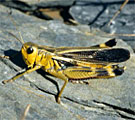Epacromius tergestinus (Charpentier, 1825)
![Epacromius tergestinus: Male (French Alps, river Giffre, September 2008) [N] Epacromius tergestinus: Male (French Alps, river Giffre, September 2008) [N]](thumbs/acrididae/tergestinus_m.jpg)
![Epacromius tergestinus: Male (French Alps, river Giffre, September 2008) [N] Epacromius tergestinus: Male (French Alps, river Giffre, September 2008) [N]](thumbs/acrididae/tergestinus_m2.jpg)
![Epacromius tergestinus: Male (French Alps, river Giffre, September 2008) [N] Epacromius tergestinus: Male (French Alps, river Giffre, September 2008) [N]](thumbs/acrididae/tergestinus_m3.jpg)
![Epacromius tergestinus: Female (river Giffre 2008) [N] Epacromius tergestinus: Female (river Giffre 2008) [N]](thumbs/acrididae/tergestinus_w.jpg)
![Epacromius tergestinus: Female (river Giffre 2008) [N] Epacromius tergestinus: Female (river Giffre 2008) [N]](thumbs/acrididae/tergestinus_w2.jpg)
![Epacromius tergestinus: Female (river Giffre 2008) [N] Epacromius tergestinus: Female (river Giffre 2008) [N]](thumbs/acrididae/tergestinus_w3.jpg)
![Epacromius tergestinus: Female (river Giffre 2008) [N] Epacromius tergestinus: Female (river Giffre 2008) [N]](thumbs/acrididae/tergestinus_w4.jpg)
![Epacromius tergestinus: Female (river Giffre 2008) [N] Epacromius tergestinus: Female (river Giffre 2008) [N]](thumbs/acrididae/tergestinus_w5.jpg)
![Epacromius tergestinus: Female (river Giffre 2008) [N] Epacromius tergestinus: Female (river Giffre 2008) [N]](thumbs/acrididae/tergestinus_w6.jpg)
![Epacromius tergestinus: Habitat in the French Alps (river Giffre) [N] Epacromius tergestinus: Habitat in the French Alps (river Giffre) [N]](thumbs/acrididae/tergestinus_h.jpg)
![Epacromius tergestinus: Habitat are muddy pepple banks (Giffre) [N] Epacromius tergestinus: Habitat are muddy pepple banks (Giffre) [N]](thumbs/acrididae/tergestinus_h2.jpg)
![Epacromius tergestinus: Habitat: Typha minima on muddy pepple bank [N] Epacromius tergestinus: Habitat: Typha minima on muddy pepple bank [N]](thumbs/acrididae/tergestinus_h3.jpg)
Nutrition:
Grasses, other plants and alluvial plant parts
Habitat:
Epacromius tergestinus is restricted in Europe strongly on muddy gravel bars along natural rivers (in Central Europe Alpine rivers) or similar locations on the coast (Atlantic in northwest Spain). At the remaining sites of the Alpine rivers, it occurs often in scattered stocks of Typha minima.
Life cycle:
The adults are observed from July to October. They are found especially on the edge of sparse vegetation (e.g. Typha minima) on muddy open ground and are here often accompanied by Tetrix tuerki.
Endangerment factors:
Epacromius tergestinus is highly threatened with extinction in Europe. Almost all Central European sites (e.g, in Germany on Lech river, in Austria and Switzerland as well as in Northern Italy) are now destroyed. In France only a few residual populations (Durance, Giffre) are known. Cause is the incredible complete destruction of almost all free-flowing, dynamic river segments with broad rearrangement areas, where always new habitats were generated, due to engineering measures to generate electricity, for gravel extraction, shipping promotion and in particular in order to gain new agricultural and settlement areas. This type of habitat is probably the most endangered in Europe and in Germany only to find in a short section on the Upper Isar river in mentionable scale.
Remarks:
Epacromius tergestinus occurs especially in central and east Asia. In Europe there are only disjointed remnants left today (due to habitat destruction) which are located on the Atlantic coast in Northern Spain, very few west Alpine rivers, the Black Sea and in Russian Volga region.


